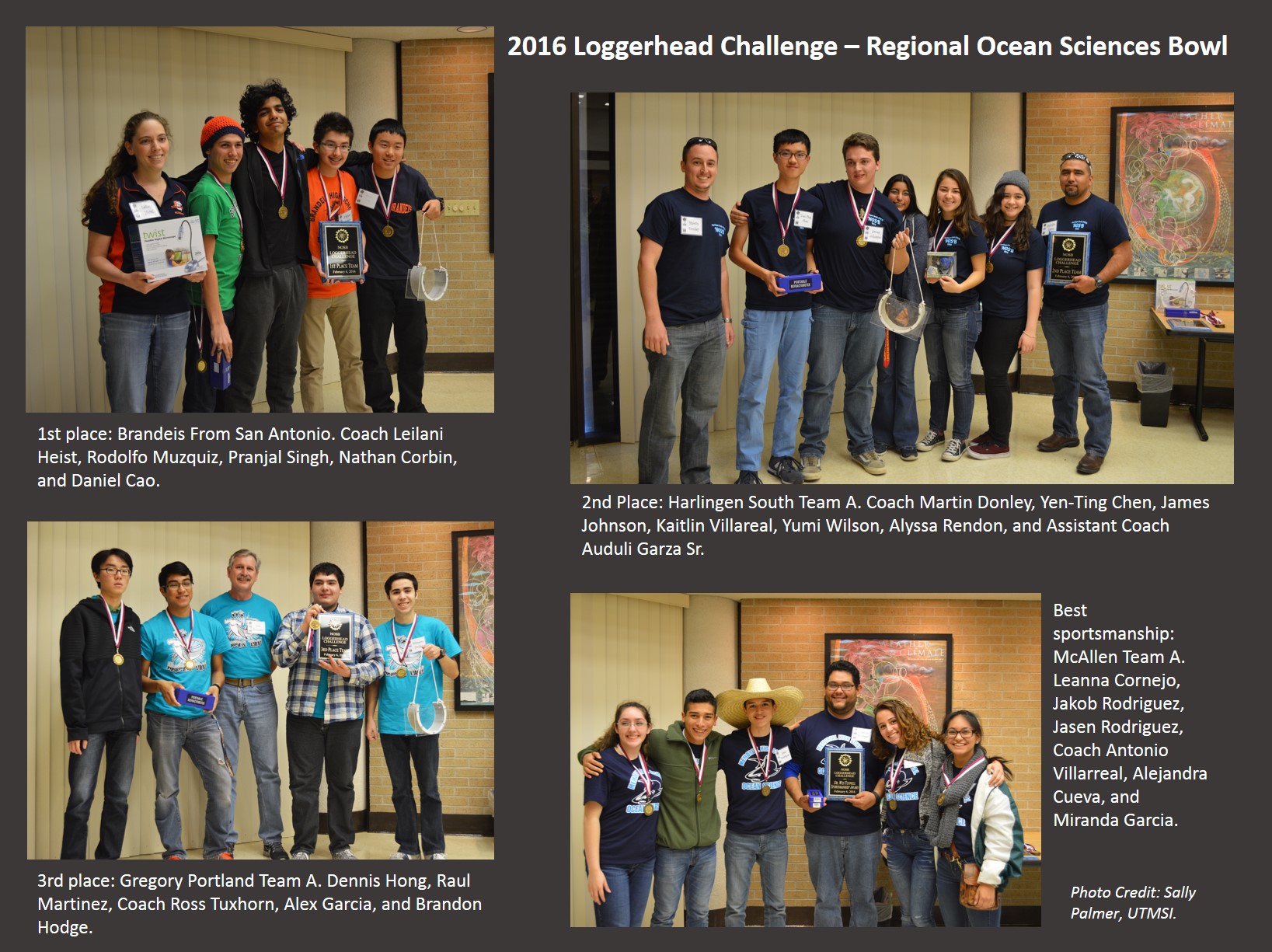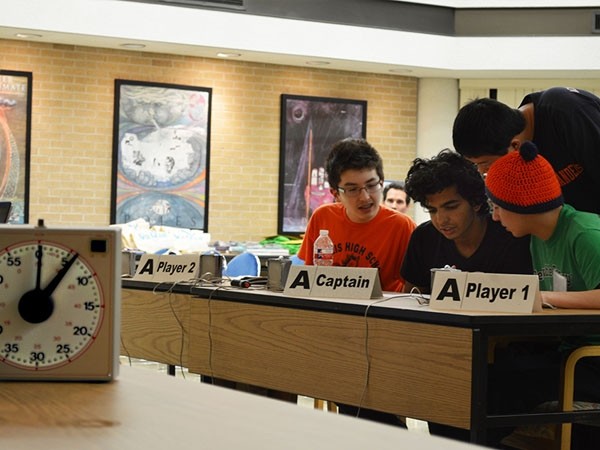PORT ARANSAS, Texas – This past Saturday, February 6, 2016 ten teams from seven schools throughout South Texas competed in the Loggerhead Challenge, the Southern Texas Regional competition of the National Ocean Sciences Bowl (NOSB), which was hosted by Texas Sea Grant and co-hosted by the Mission-Aransas Reserve, and The University of Texas Marine Science Institute. In this competition, high school students from across the region demonstrated their knowledge of marine and coastal science by answering questions ranging from biology, physics, chemistry, geology, geography, mathematics and the social science. Each team consisted of four students and a coach. The purpose behind all of the mental matchups is to increase ocean literacy and prepare students for ocean related science and other STEM careers. Through this experience they will become knowledgeable citizens and better their understanding of environmental stewardship. The ocean is an ideal interdisciplinary teaching tool for science, technology, education, and mathematics (STEM) that applies learning in a real world context. Working in the ocean environment poses challenges that push the innovation, engineering, and technology development needed in our workforce. Ocean science is not a course generally offered at the high school level, but this opportunity combines high school science and math in a format that is both exciting and challenging. The NOSB is one of the few ways students gain exposure to all of ocean science and related careers as they are beginning to chart their course in life.
This year, Brandeis High School from San Antonio took the top honors. They will go on and compete at the National Ocean Science Bowl on April 21-24, 2016 in Morehead City, North Carolina at the University of North Carolina Institute of Marine Sciences. Harlingen High School – South Team A received second place, Gregory Portland High School Team A received third place and McAllen Memorial High School Team A received the award for best sportsmanship.

This project was supported by Texas Sea Grant, National Oceanic and Atmospheric Administration, Mission-Aransas National Estuarine Research Reserve, the University of Texas Marine Science Institute and many incredible volunteers.









